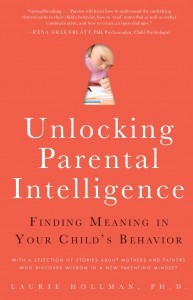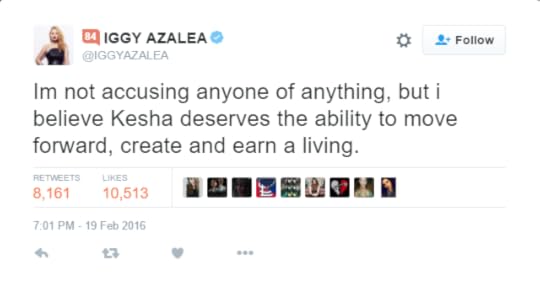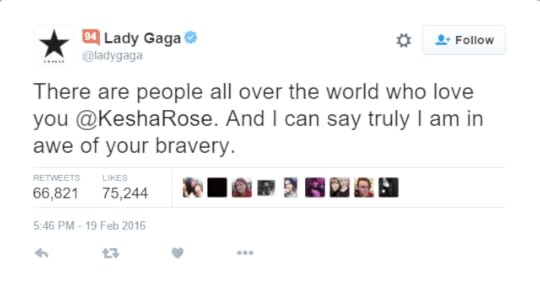Rachel Thompson's Blog, page 11
March 20, 2016
The Signs You Are Recovering from Child Abuse
One of the most common fears I hear survivors voice is that they will never recover. In the midst of our hard work, we can’t see that we have made progress. Our childhood experience robbed us of the ability to see ourselves moving forward on our journey. Learning road signs marking recovery progress can give us both hope and encouragement.
Learning to Focus on the Negative
As survivors of childhood abuse, we have usually received a lot of conditioning to focus on negative, fearful and difficult things in our lives. When we were kids doing that was a survival behavior. We believed we had to focus on potential harm to try to avoid it and stay safe. For many of us, our childhood revolved around awful, negative experiences. Our family system was dysfunctional. We grew up with chaos and people hurting one another physically, verbally or emotionally. Our parents may have had a very negative outlook on lives themselves. It’s no surprise that we grew up to focus on them as adults, as well.
How Focusing on the Negative Hinders our Recovery
While understandable, that becomes a hindrance when we are recovering. Focusing on the negative, unable to see positives, means that it’s very difficult for us to see our own progress in recovery. We often feel like we’re going nowhere or maybe even losing ground as we work so hard to move forward. When someone else tells us they can see us making progress we can be distrustful or cynical.
Road Signs That We’re Making Progress
So let’s take a look at some “road signs” along the path to recovery. What can we objectively look for to let us know that we are making progress? Here are some common signs that our recovery is moving forward:
We become more resilient, bouncing back from difficult or traumatic experiences quicker and more easily than we have before
Our Distress Tolerance increases
Our Frustration Tolerance increases
We begin to experience and express emotions that previously felt off limits or too frightening to experience
We utilize fewer “negative” coping skills like dissociation and over eating when we encounter stressful situations
Our self-talk is more positive and supportive than negative and destructive
We have increased hope about our future and believe that it holds a life we will enjoy living
We recognize and own the truth that our abuse was not our fault
We begin owning and exercising our personal power to support ourselves and our recovery
We practice self-care more frequently and with greater self-compassion
We maintain positive growth and coping strategies during times of stress and challenge rather than reverting to old coping strategies and behaviors that don’t serve us.
We have built and are able to maintain strong boundaries against toxic people and toxic treatment
We experience a decrease in our PTSD symptoms like nightmares, intrusive thoughts and disrupted sleep.
Having Hope
It may take some practice, but we can use these road signs to gauge our recovery progress. Initially our vision might not be clear enough to see them. In those moments we can ask our therapist, partner or good friend to help us. They can see how far we have come even when we cannot. Progress gives us hope and forward momentum. When we learn to see it then we can use it to gain even further ground.
Our childhoods were ugly and damaging in so many ways.
We deserve to have a recovery that is as smooth and as supported as possible. Hopefully, knowing these road signs along the path to wholeness and healing will help you see and celebrate your progress, making your entire journey easier and faster.
Purchase Broken Pieces and Broken Places on Amazon now! Learn more about all of Rachel’s books here. Learn about the authors of the Gravity Imprint(books about trauma and recovery, fiction or nonfiction) and purchase Gravity Imprint books here.
Connect with Rachel for social media services on BadRedheadMedia.com.
photo courtesy of Unsplash
The post The Signs You Are Recovering from Child Abuse appeared first on Rachel Thompson.
March 5, 2016
It’s These Cuts That Help Shape Who I Am by guest @JeanneSpicuzza
Please welcome amazing artist, poet, screenwriter and filmmaker (The Scarapist) Jeanne Marie Spicuzza back to my blog. I’m honored to have her here again to update us on her story of how The Scarapist (the scary therapist) came to be, how it affected her personally, and how she’s sharing her story to prevent others from experiencing a similar fate.
To Cut Away
At twenty-nine, I learned that the word “decision” is derived from the Latin, meaning, “to cut away.” To choose one path, to sacrifice another. The losses can bring great gains, but also grieving. Our choices invite an outcome often invisible, hidden, outside of our control. To be sure, one is never the same after the cut, and we cannot go back, only forward.
My life is wrought with such cuts.
And that’s how we begin. We come from a small, warm, embracing place into a cold and open world. We are naked and vulnerable, bearing a soft and throbbing spot atop our heads, seeking closure, seeking wisdom.
I’m not sure when I became so attached to the idea of security. Maybe I was born afraid, looking for something to hold, a thing that could never be taken. It would have to be something mine, something of me… something forever. There are traumas, too, places of empty despair, strange pockets of lost time. I think that’s how I got here.
When I was very young, I wanted to be a boy. My mother was educated, decorous and passive. My father was stout, a controlling Sicilian-American who dominated our family.
One afternoon, while my mother was changing my diaper, I told her that I was actually a boy. I wanted to have power, you see, and not to bend.
“You’re not a boy,” my mother insisted, laughing. “If you’re a boy, where’s your penis?”
I imagined myself in our backyard during the frozen Wisconsin winter, playing on a snow bank below our kitchen window.
“It melted,” I answered.
Winter spun into summer. I persisted in my wishing for a shifted gender identity. I asked for a doctor’s kit for my fifth birthday. I was devastated to receive a white plastic version.
“Boys get doctors’ kits and girls get nurses’ kits,” my older sister chimed.
“No!” I cried. “It doesn’t even have a stethoscope. That’s the best part!” I became livid. I screamed, “I want a stethoscope!”
I later received said stethoscope, but not the doctor’s kit. Fine, now I wanted to be a priest.
That same summer, my mother instructed my friend and neighbor, Tara Peterson, to take me to her mother. It was to be my very first haircut.
Upon arriving, Tara disappeared. Mrs. Peterson sat me in a chair and put a smock over my tiny shoulders.
“Shag or pixie?” she asked.
“Shag,” I answered.
Now I answered “shag” because I was all of five years and I didn’t know the difference. Mrs. Peterson called my parents to see if her instructions were okay. Then proceeded to cut my long locks down to 1/2 inch. The purpose was a parental lesson in shame, to show what happened when I wanted to be powerful and in control. Perhaps it was my mother’s shame, too.
Now, my hair was weird. I grew up in a suburb of German and Polish immigrants. As a Sicilian-American, instead of thick wavy strands, my head was full of frizz and curls. I watched the girls brush each other’s hair. I sat apart. But I wanted to belong.
When I was seven, eight and eleven years old, my mother checked into St. Michael’s Hospital for depression. I broke out in horrible hives. My hair was unbrushed. My mother later had to cut chunks of my hair out, the snarls that formed in my soft, fine locks. Then her cousin took me to get my second hair cut. I got sick and cried. A few years later, I sat at my mother’s friend’s beauty parlor for over an hour while a stylist brushed the snarls from my hair. Her friend later offered me lodging when I became pregnant with my daughter, Stephanie. My mother smiled as she explained that her friend told her I could sleep on the kitchen floor.
When I was twelve, my long, all one-length hair was burned by our outdated kitchen stove. Like our cars, furniture and clothes, our appliances were used until they broke down. The gas pilot was so clogged that the oven was extremely slow to light. One afternoon, I leaned in with a match and waited. When the pilot finally lit, it blasted heat in my face. I went upstairs to the only full bathroom, accommodating our family of seven. I noticed what appeared to me to be burned fragments from the oven all over my head. I washed the pieces out. As years passed I saw a singed hair and realized that the burnt fragments had been my own hair. At thirteen, I had my long hair cut into layers for the first time. My father called me a prostitute. It remained layered throughout my teen years. Stylists always cut it too short.
Moving On
Shortly after my sixteenth birthday, I met him. He was a mean and ornery boy. We dated for four months, and I became pregnant. In the state of Wisconsin in 1985, a minor required parental permission for a legal abortion. The boy wanted me to pay him to sign adoption papers. Instead, I gave him his walking papers. Then I gave my daughter up to my parents, after they presented me with guardianship documents and told me to sign. The alternative, they said, was give up college, go on welfare, and raise Stephanie on my own. How terrified I was! I didn’t know how to survive myself, or so I thought. So with shakes and tears, I made their deal in the children’s court. I felt I had given up the best part of me.
One might question how a woman can give up her child to her abusive parents. I was thinking about airplane crashes. You have to fix the oxygen mask over your own mouth first, learning to breathe in a crisis, before you can turn to help your child. So, at age eighteen, my beautiful baby girl, having toddled up to the rear screen door of my parents’ house, stared at me, my belongings piled into a station wagon, and watched me leave.
From twenty years old on, I longed for long hair. Maybe I wanted to grow some part of myself that I’d given up. And to feel a part of something. I wanted to be beautiful, feminine– alive! I began to grow my hair out, or at least attempt to.
But at twenty-one, my then-boyfriend, an abusive type whom I just discovered was cheating on me, cut off way too much of my hair. I looked in the mirror and saw it crooked, shorter on the right side– right side, father issues. The taking of control. When I broke up with him eighteen months later, I decided to cut my own hair. I wanted to show him, and my father, that I didn’t need them anymore. I had the power. I was twenty-two. Unfortunately, I cut off too much. About six or eight inches. It looked horrible. Crooked on the right side. Father issues. At twenty-three, I fell in love. But he ran off with another woman. I developed Trichotillomania, an obsessive-compulsive hair pulling disorder.
At ages thirty and thirty-five, having finally grown out my hair, two different stylists cut six and eight inches of hair. Always six or eight inches. The first was layers everywhere. The second, at least, was even, a better cut. Still, both more than I’d asked for. Still not in control.
By my wedding in 2005, the second cut had grown out, eighteen inches, perfectly even. I was in balance. Fullness and length… perfect, a blissful time. But five short months later, my day of glory ended, and my happiness was shattered, splitting at the ends.
It was to be the culmination of all cuts.
Meeting The Scarapist
I had met her at a mutual friend’s wedding. She smiled sweetly and hunched slightly, indicating to onlookers a sort of demure, civilized submissiveness, like a fragile little girl trapped in the body of an elderly woman. She beamed with honeyed eyes and the welcoming flesh of fresh and fragile cedars.
She invited me out to lunch, and after several months and three lunches later, I found myself vulnerable, in the midst of a huge life crisis.
I had just purchased my first home. Six weeks later, it flooded. My daughter, now living with me in California and adjusting to my parental influence, had run away from home with my older sister, who refused to bring her back for nearly a week. I was devastated. My family was unsupportive, my boyfriend and future husband, absent.
The mutual friend called. Seemingly concerned, she urged me to call her. I dialed. She said she could help me. She promised I would be freer than I’d ever been.
After two years, I began expressing desire to terminate. I was planning my wedding. It was January 2005.
“I’m the first therapist to let people go when they’re ready,” she cooed, sweetly, “and, dear, you’re not ready.”
She began to tell me what books to read. She instructed me on how to wear my make-up. She told me which plays to see. Hypnosis. It was all good for me, she said. How safe it seemed, tucked inside her nurturing. And she liked to produce such feelings of security, always offering blanket and pillow, speaking calmly, delicately. So safe, I’d thought, that didn’t notice how much it could cut, how much it controlled. I was regressing.
In the summer of 2005, three months after my dream wedding, I had become successful. I had grown my hair to a gorgeous, healthy and feminine all one length, twenty-one inches, three inches from my waist.
She asked me what I wanted to work on. I told her about my hair.
One might question how a woman can give up her deepest secret to an abusive therapist. The simple answer: I didn’t know. She was someone I’d grown to trust, someone who seemed to understand my past, my pain. Someone who acted like a mother I’d never had, someone with a soft and gentle nature who seemed to truly support me. A person who cared and accepted. And she told me so, often. She hugged me. She gave me gifts. She said that she loved me.
Then I told her. I said that if anyone were to cut up my hair, six or eight inches of length, create layers, crooked on the right side, leaving holes where hair should be, thinning it out, it would destroy me.
I thought I’d be free of my dangers at last, my fear of cuts! The truth, my disclosure, would liberate me! And she would save me! Yes, she would. She said so. And I believed her. Only later would learn that such salvations are never what they seem. Often, these places of solace turn out to be toxic, even poisonous… prisons of our worst nightmares.
I told her I’d been having problems saying no as of late, problems with boundaries. I hated the word “should.” I was becoming very anxious. I had just returned from a visit from my hometown. It was fun. She told me I wouldn’t go back there until my father was on his deathbed, and maybe not even then. I said I had friends there to visit. I said I had a stylist there, the only one who could cut my hair properly. My hair therapist, I called her.
“That’s silly,” she uttered. “You need someone here, in Los Angeles.”
And I didn’t know how to defend myself. I didn’t even know I didn’t have to! I hadn’t yet learned to win by walking away.
“But she’s the only one… Everyone I go to cuts off too much of my hair.”
She called it “an excuse” and, for the first time of several to follow, suggested that I see her stylist. I said no. She assured me that her stylist was safe and sensitive. Would only cut what I asked. Several times. At least once for every inch.
“I’ve heard that before,” I answered politely. “No, thanks.”
After weeks of insistence, she did what I had told her I’d had no defense against. The method my parents applied when presenting me with guardianship papers. She’d remembered it. She had planned it. She’d counted upon it. Her triumph! She rose from her chair, stood up in front of me and, looking down as authority to novice, placed the stylist’s phone number in my hand.
“Do this. Call Brenda,” she said firmly, but kindly. “I want you to do this,” she added, cooing. “This will be good for you.”
And I did it! I was so excited! It was good for me! I wanted to make her, and myself, proud. I would be healed, healed at last! Or so I’d thought. And I called. I made an appointment.
The next session, she led me to the bedroom fashioned as her office and showed me how her cat had been attacked by an animal, possibly a coyote. She pointed to a spot underneath, on his belly, where a large gash had torn his flesh.
“Look. Where the hair is gone. But it’s growing back.” She smiled. “See, we can heal from old wounds.”
She sat down and commented that I hadn’t gone to her stylist yet. Strange, I wanted so little trimmed off, how would she know… ? But I was trusting, not at all suspicious.
She asked me what frightened me about haircuts.
“Layers,” I answered. ” Layers. Five or six inch layers. Too much off the right side. An inch too crooked. A hole on that side, a place where the hair is too short inside on the right. A thinning of my hair. Bangs. The one thing that could potentially destroy me,” I reiterated.
Then she asked me what frightened me most about haircuts.
“Layers,” I said.
“What are layers for?” she inquired, with trained innocence.
“They’re supposed to give hair bounce,” I explained, “but I have very fine hair. It took me years to grow out. They just make my hair look thin.”
Then she put me under. But she never called it that. It was spiritual work, inner work. When I still assumed spiritual meant benevolent.
“I’m going to do something with you that I rarely do with my other patients. I’m going to take you on a high spiritual meditation.”
Wow. I was worthy of that? I was so flattered, so honored. I only later I remembered this:
“Layers,” she said, calmly. “I want you to remember the word ‘layers’ and that layers give hair bounce. Nod your head if you can hear me. Good.”
To Cut Away…Again
I went to my hair appointment that week. Three times I’d asked her stylist to trim 1/8 inch off the ends. I told her I’d had “hair issues,” that if I lost more than an inch, I’d have a massive trauma. Shorter on the right side. I used to suffer from Trichotillomania. Control issues.
“Is that a nerve disorder?” she asked.
I explained that it was. Just like the scarapist had instructed me. The stylist nodded.
“Do you have a husband? I don’t have a husband. Do you have a house? I don’t have a house. Do you have children? I don’t have children,” she recited. I wish I would have known what destruction envy, the most deadly manifestation of shame, can do.
She said my hair was split. But I knew that it wasn’t. Then she began stroking the back of my head.
“Layers,” she said. “You should have layers. I’ll put layers in your hair. Layers give hair bounce.”
And I wanted to scream. I found that I couldn’t. And the stylist began. I forgot most of it, until two months later. Here is what I remembered:
Starting with the right side. Six inches fell to the floor. She moved to the back.
“Not in the back, please, not in the back,” I screamed to myself, but it still wouldn’t come out.
She raked the scissors up the shaft and broke my hair. She cut it crooked, too much off the right side. My voice wouldn’t work. “Please stop,” I thought. It didn’t matter. It was too late.
It turned out, she had hacked out over 65 percent of my hair, causing root and shaft damage, even hair loss.
I left for Europe four days later for a scheduled appearance at a film festival. Upon arriving, the reality of what had happened was beginning to land, and I had a massive breakdown. I couldn’t walk on my own. I called the scarapist from a pay phone across from Victoria Station. I told her I was remembering.
“You should have said something, dear,” she cooed.
I returned home. I went to see the scarapist, shaking, sobbing uncontrollably. She clasped her hands together, excitedly.
“You’ve had an abreaction!” she exclaimed, victoriously. “You’ll see one day that this is a gift of grace.”
And I had trusted her. I had thought that by telling her my history, in great detail, she would protect me from harm. But I had thought wrongly. I had been betrayed.
She wouldn’t let me go. She kept calling me, wanting me to come back to her.
“I’m the first therapist to let people go when they’re ready,” she cooed, as before. This time, her words held new meaning. “And, dear, you’re not ready.”
I phoned my former psychiatrist from my hometown, a wonderful woman who’d helped me obtain my high school equivalency. She advised me to leave a message, canceling all appointments until further notice.
The scarapist actually phoned me back, shocked to receive what she called “such a curt and angry message.”
I was not angry. I was asserting my boundaries.
She continued, how she’d wanted a voice on the phone. I called her again and told her I was releasing her.
“See, now that’s nice,” she purred. I was horrified.
“Whatever it is,” I chimed in, “I’m letting you go.”
I called suicide hotline over twenty-three times in nine months following our last conversation. I felt folded into pieces, broken, seemingly beyond repair. I beat my own body. I didn’t want to live with the shame. My husband found me, naked in the dark.
“What are you doing?” he asked.
“Just leave me here,” I cried.
“No,” he said. Then he carried me to bed.
“I’m a horse that can’t run. Leave me by the side of the road. I’m ugly.”
“Shhh… ” he whispered. “No, you’re not. You’re beautiful.”
I asked, prayerfully, how I would ever get through it. A voice, seemingly entering my ear and embracing me while simultaneously coming from within my heart, sang, “I have loved you with an everlasting love, I have called you, and you are mine.”
Finding Boundaries
It was a new beginning.
I visited my hair therapist in my hometown. She told me it that would take three and a half years for my hair to grow back, forty-two months from the day it was cut. I sobbed. And in fact it never grew the same. She would later tell me, “I didn’t want to say it then, you were traumatized enough. I’ve never seen anything like it. It looked burned. She hacked the shit out of your hair.”
It seemed like all my labors, crawling from a deep hole, had disappeared. Shattering and devastation, my pain, grinding on my mind and bones everyday. I was often dizzy, and had to catch myself from falling. I was diagnosed with chronic post-traumatic stress disorder, and was told it would be years before I would recover. The sorrow sat on top of my head everyday, a constant reminder of the scarapist’s betrayal. The ugliness and anguish of other people’s shame.
I was determined to take legal action, to report the scarapist to her licensing board. I kept thinking of our last appointment.
“I’ve taken people there before, but this just happened!” she uttered, proudly. “I have patients I’ve been seeing for years and years. I have one patient, and I’m all she has… ”
She had to be stopped! She was making people sick. She was implanting memories. She was destroying lives.
I hired an attorney. I contacted the California Board of Behavioral Sciences. I wrote to the scarapist, requesting full copy of my records. She left three voice messages. The third was the most telling.
“I don’t know what’s come over you. I have done nothing to harm you,” she recited, hypnotically. “And you know that in your heart.”
I sat down. My hand covered my face. I couldn’t move for twenty minutes, all the forced innocence and false empathy and lies and manipulations, rushing over me like a sandstorm. And then I knew.
I’ve since discovered that the type of sexual abuse I’d thought I’d suffered was implanted. Encouraged by the scarapist to alienate everyone around me– save her, of course– I would have to rebuild my life.
I won the lawsuit. I felt like I was winning my soul.
I saw the scarapist one last time. We were walking towards each other in a long, slender hallway, following the court hearing. She wore a precious powder blue dress. She approached with glazed eyes and a wide smile. All I could think was, “You’re a liar, you’re a liar… ” I felt a force propelling me forward, like a hand at my back. As soon as she noticed me, her smile fell into a frown. She began spinning around, her hand reaching for a door. She searched the wall for something to stare at. She kept turning that way. That’s how I remember her: her own shame exposed, betraying herself. She knew what she had done.
The most painful thing I had to do was to find pardon. I was otherwise in danger of becoming like the ones who hurt me. Like the scarapist and her hypnostylist. It is an ongoing process, and a struggle.
I vowed find my place of safety in the healing work I created. I would labor my own salvation, “with fear and trembling,” as Kierkegaard so aptly put it. The path as narrow as the razor’s edge, so the Vedas say. Because sharp moments cut deep impressions and so determine our life’s directions.
In her notes, the scarapist called my daughter “illegitimate” and my movies pipe dreams. In fact, my daughter’s presence in my life is the most incredible and authentic joy I have ever known. And my first motion picture, based upon this experience, will be completed later next month. So the scarapist was wrong on both counts.
I have learned. And I will trust again. I promised myself I would forgive, and even grow to love, however deep, wide, agonizing, receding, or glorifying, my decisions.
Because they are mine. I had found it. It’s these cuts that help shape who I am.
Honey, Delicious.
I have manifested such an abundance of disgust
for my former therapist
it’s almost a spiritual experience.
She was a narcissistic sociopath.
I gave up hating her for Lent.
Needless to say, the results
of my analysis were tragic.
I haven’t felt so violated
since Tim Tuttle tried to grab me
in the wilderness section of my Appalachian Trail.
It was in the sixth grade.
After little league practice.
He lied and told everybody we made out,
behind the science building,
which really messed things up
with my intended, Jim Glynn.
I watched him kiss my fourth cousin
on the mouth. It played out
like a Shakespearean tragedy.
After lunch, which consisted of
Doritos and smoking pot
in the back of the Citgo station,
I watched in total awe
as a soccer ball spun towards me,
going about 6 miles an hour.
I kicked with all my Zen and missed.
Jody Lundgren laughed so hard
she spit out chewed up gas station cravings
and cotton mouth.
We were in the moment,
but we were not constructive
members of the community.
My mom was apocalyptic.
She stocked canned goods
in our basement cellar.
My dad didn’t play favorites.
He was mean to everybody.
He made me eat the cream-style corn.
Needless to say,
I kept my Star Wars figures good and packed.
I knew the limitations of my religious upbringing.
Now, I am wary of metaphysical peddlers,
who try to sell unmitigated certainty.
They are pimps and panderers.
The absence of unknowing
is the dangerous result
of cult and fascism.
It is the path to Kool-Aid and other processed foods.
Any psychology that tells you
you can figure yourself out
is inherently flawed.
Understanding your own mind
only goes so far.
Eating with other people is much more fun.
The sweet taste
of honey delicious
is the Great Mystery.
It’s a sex-shaped Popsicle
that pours into the cosmos
like liquor made by monks.
My former scarapist is a demon granny.
She doesn’t feel the Flavor.
If she did, she’d quit giving advice.
She’d be all Cool Hand Luke.
Then she’d know,
and she’d be as quiet as God.
Jeanne Marie Spicuzza is an actress, writer, producer, director, model, philosopher, activist, watercolor painter and illustrator, composer and Master Herbalist. She is the founder and CEO of Seasons & a Muse, Inc..
The Scarapist official website
The Scarapist on IMDb
The Scarapist trailer
The Scarapist on Facebook
The Scarapist on Twitter
The Scarapist on Instagram
Photos courtesy of Jeanne Marie Spicuzza
Purchase Broken Pieces and Broken Places on Amazon now! Learn more about all of Rachel’s books here. Learn about the authors of the Gravity Imprint(books about trauma and recovery, fiction or nonfiction) and purchase Gravity Imprint books here.
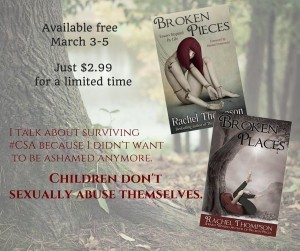
Connect with Rachel for social media services on BadRedheadMedia.com
The post It’s These Cuts That Help Shape Who I Am by guest @JeanneSpicuzza appeared first on Rachel Thompson.
February 27, 2016
Is There a Little Bit of “The Danish Girl” in All of Us? by @lauriehollmanph
Guest post from Laurie Hollman, PhD
The Movie: The Danish Girl
The Danish Girl is a remarkably stunning movie about the inner struggle and transformation of a transgender person. It speaks at once to the identity in all of us. As I watched, I found myself questioning: do I really express my identity? Do I know my identity? We all have roles at work, in partnerships, perhaps as parents, but who is inside of us to call our own?
I thought one place I can’t disguise or mask my identity is in my painting. This struck me as I watched The Danish Girl about two painters. What was inside each main character’s inner world emerged through their paint brushes. The Danish Girl’s devoted wife drew pictures of her partner throughout her life. She was a part of her/him no matter her/his shifting exterior. She was indelibly attached to her/his interior.
Looking Inside Ourselves
Who is in your interior? Who do you cling to inside when you are most yourself. Do you express that person in your life or does this person stay inside just you? It’s a touching moment for all of us when we feel someone else really recognizes the you in me–the person not cluttered by external expectations, validation, and needs for approval. Of course, we may be a conglomeration of aspects of personhood, but something about all that is unutterably you.
As a psychoanalyst who works with parents and their children, and adolescents as well as individual adults, I’ve spent decades helping people find themselves from the inside. I want parents to recognize that the behaviors of their children that puzzle them have meaning because they often speak to their inner world, what’s on their mind, and often, their identity.
Our Own Personal Journeys
The Danish Girl leads each of us on a personal journey, because we identify with finding our identity or sense of self. This doesn’t take away from how the film depicts the astounding path of transgender persons that we must recognize in this very moment and for all times those who are seeking acceptance by themselves and by others, but it does touch us all in deeply personal ways.
Laurie Hollman, Ph.D. is a psychoanalyst, painter, and author of Unlocking Parental Intelligence: Finding Meaning in Your Child’s Behavior found on Amazon, Barnes & Noble, Familius and wherever books are found.
Read Laurie’s previous post for me here on what it’s like to be a mother with anxiety.
pictures courtesy of Laurie Hollman, PhD
Purchase Broken Pieces and Broken Places on Amazon now! Learn more about all of Rachel’s books here. Learn about the authors of the Gravity Imprint(books about trauma and recovery, fiction or nonfiction) and purchase Gravity Imprint books here.
Connect with Rachel for social media services on BadRedheadMedia.com
The post Is There a Little Bit of “The Danish Girl” in All of Us? by @lauriehollmanph appeared first on Rachel Thompson.
February 20, 2016
This is the Reason Kesha (and All Sex Abuse Survivors) Deserves Support
 Kesha is an international pop star with millions of fans around the world and shelves full of awards. She’s also, allegedly, a rape victim. Now, I’m not that up to date with the recent music biz scene but, I’m gonna say that rape is not supposed to be part of the performer package she signed up for at eighteen.
Kesha is an international pop star with millions of fans around the world and shelves full of awards. She’s also, allegedly, a rape victim. Now, I’m not that up to date with the recent music biz scene but, I’m gonna say that rape is not supposed to be part of the performer package she signed up for at eighteen.
So, when she sued to be allowed to break her contract to get away from her long time abuser – did I mention the accused is producer and Kemosabe Records owner, Dr. Luke? – I thought she’d pull it off. Even if her case is never heard in a criminal court where he’d get locked away for being a gross fuckwad, she’d at least be able to not be around him or signed to his label.
I was wrong.
On Friday, Judge Shirley Kornreich decided that money, namely the money Dr. Luke (Lukasz Gottwald) and Sony make off Kesha, is more important than Kesha’s personal well being. Yes, I know I’m assuming Dr. Luke is a disgusting rapist who idolizes Bill Cosby, but I can’t imagine someone going to such incredible lengths to weasel out of a contract. There are easier and less icky ways to do that. Just ask Mariah Carey.
FIGHT FOR FREEDOM
Now, Kesha wasn’t looking to totally high tail it; she offered to work with Sony but, to my surprise (which really shouldn’t be a thing at this point), Sony sided with the, um, alleged rapist. When the fuck is the entertainment business going to not side with the accused? Michael Jackson, Bryan Singer, Bill Cosby and Victor Salva (who was convicted) all retain the respect and admiration of powerful people who defend them. They have mainstream careers (well, Jackson did till the day he died, at least). And they’re all alleged (except Silva, who was convicted) sexual assaulters.
Victims, according to producers, labels and a New York Supreme Court judge, are worth less than the money the victims and predators bring in. Kesha is a thing, something to be trotted out, have money thrown at her and dragged back behind the curtain where, allegedly, she becomes her master’s personal sex doll. And when she spoke up, when she demanded freedom from the forced bondage, she was told, basically, you’re not believed.
You don’t look raped. And he seems like such a swell fellow. Now go back to your song making and let the real people decide what’s best for you. Shoo.
Fuck you. Fuck you. And fuck you.
TRAPPED
How is Kesha supposed to heal? How is she supposed to survive when the law would rather let her drown than rule against big business? Last I checked, she was guaranteed “life, liberty and the pursuit of happiness,” not a money making institution.
Oh, wait, she’s but a woman and has no worth to speak of except that which society bestows upon her.
Duh.
Y’know, while we’re at it, let’s take away her rights to choose a mate, own property, open a bank account and vote. Isn’t that what the Dark Ages were all about for the ladies? What, this isn’t 1152? Could’ve fooled me. I mean, if we were an enlightened society, as we so often claim, our law makers and upholders would do the humane thing and let her break her contract. Sony, that which rules them all, would still have had her earnings on their books but insisted she stay with her rapist (yea, I left out alleged, get over it), which is the least she asked for.
LISTEN UP!
Listen all you entertainment big wigs, this is someone’s life you’re messing with. By denying her this, you’re not only questioning her story, you’re questioning the story of every single person who comes forward after a sexual assault. You’re claiming her claims are just leverage to get what she wants. Are you fucking daft? Would you cry rape just to get out of a contract? Hm? Well? I’m waiting…
Yea, didn’t think so. So, why are you so sure that’s what she’s doing? Do you have any proof? A single reason why I should believe you over her?
Do you get off on protecting sexual predators? Michael Jackson, Bryan Singer, Bill Cosby and Victor Salva would all (secretly) say yes, and thank you for letting us continue terrorizing innocent women and children with our insatiable rape-lust. Cause that’s what you’re doing. You’re enabling these bastards by giving them free reign and your protection and blessing to continue. Because of money. Yes, shitloads of money. Money, that which you value above all else.
You make me sick.
MISCARRIAGE OF JUSTICE
How did this happen? At what point did the right to feel safe become less important than the right to make money off the abused? Hell, when did the former even become a thing? What she’s been put through is tantamount to (sexual) slavery and last I checked, the Thirteenth Amendment was still a law we respected and followed. Is there an exception clause there for when a buttload of cash is on the line? Pretty sure Congress wasn’t that stupid when they passed it. Does it only refer to menfolk? Nope, just double checked.
It’s simply amazing, in a bad, scary way, that this young woman is being forced to not only face her attacker but keep herself legally bonded to him. Her choices, again, have been ripped away from her. Nice way to revictimize the lass, Judge Shirley Kornreich; you’ve done your country a great service in reminding the world just how ass backwards the U.S. is.
Excuse me, I feel that tart bile rising again.
MASSIVE SUPPORT
It’s not all pure evil making the rounds though, as an outpouring of support for Kesha has taken the interwebs by storm. Many condemn Sony and the judge’s unfair ruling, some remind us that Zayn Malik (One Direction) was able to break his contract simply because he was unhappy while others, like Lady Gaga, MTV, Kelly Clarkson, Ariana Grande, and many others are raising Kesha up for her bravery as she faces insurmountable odds. For once, I don’t hate people.
I still hate greedy, stupid, fuck-your-rights people, but maybe, just maybe, when Sony sees how many fans (which, for them, equals cash money) are outraged over their treatment of Kesha, they’ll do the right thing and release her. Of course, for that to even be a possibility, people need to keep it up;
let’s remind Sony on a daily basis that what they’re doing is wrong and an epic evil level. Remind them that Kesha is a person and a person deserves to be free to live their life free of cruel, abusive pieces of shit like Dr. Luke.
#FreeKesha
Picture courtesy of pixabay
Purchase Broken Pieces and Broken Places on Amazon now! Learn more about all of Rachel’s books here. Learn about the authors of the Gravity Imprint (books about trauma and recovery, fiction or nonfiction) and purchase Gravity Imprint books here.
Connect with Rachel for social media services on BadRedheadMedia.com
The post This is the Reason Kesha (and All Sex Abuse Survivors) Deserves Support appeared first on Rachel Thompson.
February 12, 2016
Why You Need To Create a Trigger Toolkit by @BobbiLParish
 What Are Triggers?
What Are Triggers?Triggers, events or situations that cause us to involuntarily recall emotions or memories associated with our trauma are a common occurrence in the lives of most survivors of childhood abuse.
Everything, from a scent, like the aftershave our abuser wore, to a specific date, such as our abuser’s birthday, can send memories and emotions flooding into our brain.
Because triggers are often subconscious and evoke a lightning fast response, it is difficult to stop them from happening. Sometimes we can anticipate a trigger, such as our abuser’s birthdate or a family holiday celebration where our abuser will be. At other times, the trigger couldn’t have been anticipated and takes us by surprise. In our online survivor community, we call those “Ninja Triggers.”
Triggers can feel overwhelming, whether we knew they were coming or they take us by surprise. The best way to handle triggers is to have an array of coping strategies developed ahead of time, before we’re in the middle of a flood of feelings and memories, which severely limits our logical thinking and problem solving. Developing a Trigger Toolkit now ensures that when we are triggered, we only have to pull out our fully stocked toolkit and select the coping strategy that best fits the situation we are in.
Trigger Toolkits contain five categories of coping strategies:
Grounding: these interrupt the overwhelming feelings and thoughts swirling around inside our heads by shifting our attention to our bodies which helps us feel calmer, focused and more in control of ourselves
Resolving: these address the underlying cause of particular triggers so that they are no longer a source of our being triggered in the future
Affirming: these directly impact the way we talk to and think about ourselves and our triggers, making it easier for us to feel in control of our triggers rather than being at their mercy
Distracting: these strategies do not resolve or change our response to a trigger. Instead they shift our focus from the emotional and physical response to the trigger onto a calmer, emotionally neutral situation or event. This effectively starves our trigger response and it dissipates without our attention
Self-Soothing: these are strategies we can implement to soothe and calm the distress caused by a trigger
Because different triggers elicit different responses we need a variety of tools in our Trigger Toolkit. Some will work on every situation, but not all of them will work on all situations. The most important thing is to have a wide variety of types of tools so that we’ll easily be able to access a tool for any kind of trigger. Let’s look at an array of different tools you can include in your Trigger Toolkit for each strategy category.
Defining Each Strategy
Grounding:
Take deep, slow breaths from your gut rather than your chest
Start counting the number of red things in the room around you
Go outside and focus on feeling the air and sun on your skin
Rinse your hands with cold water
Run your hands over a rough surface, like bricks or a tree trunk
Fire up your iPod and sing along with songs you know
Count backwards from 88
Actively play with a pet or engage with animals
Carry a talisman with you – a small item – that you can grasp tightly in your hand when you need it
Eat something and focus on the flavors, scents and feel of the food in your mouth
Trace your hand onto a piece of paper and fill the handprint full of names of things you can touch around you
Resolving:
Address the feelings/events behind your trigger in therapy
Write about your triggers and the emotions behind them
Share your triggers in community with other survivors, allow them to help you work through the feelings and circumstances underneath the triggers
Affirming:
I’m stronger than any trigger
I deserve to be supported and helped when I feel sad and alone
I am safe now and the past cannot harm me
I am lovable and deserve to be treated well
I can treat myself with kind, gentleness in these hard moments
I am powerful
I have many choices on how to cope with these feelings
Distracting:
Watch a movie that makes you laugh
Exercise with your music turned up
Play a game with your children or a friend
Get out of the house and so something active with friends: bowling, laser tag, hiking, bike riding
Hang out with friends who make you laugh
Engage in an activity around the house that fully engages you: scrub the kitchen floor, re-organize the craft closet or tool chest
Do some craft projects or engage in a hobby that you enjoy
Bake, cook and create something incredibly good for you
Read out loud
Do some kind of puzzle that requires your full attention: cross words, a game app on your phone, Sudoko
Self-Soothing:
Curl up with a cup of tea and a warm blanket to rest
Light candles and put on soothing music
Pamper your body: give yourself a manicure, pedicure or facial
Meditate or pray
Visualize yourself living your highest and best life – build that image in your mind and return to it often to fill in details
These are only a small sampling of the possible coping tools you can develop and keep handy in your Trigger Toolkit. Experiment with what works for you. Get rid of tools that don’t work and hone those that do. Be alert for ideas and suggestions for other tools so you can continually update and add to your list of coping strategies. In time you will assemble a highly effective toolkit that provides you with everything you need to both eliminate and cope with any triggers that you encounter.
Purchase Broken Pieces and Broken Places on Amazon now! Learn more about all of Rachel’s books here.
Connect with Rachel for social media services on BadRedheadMedia.com
The post Why You Need To Create a Trigger Toolkit by @BobbiLParish appeared first on Rachel Thompson.
February 6, 2016
This is the Reason Gene Simmons Told Me To Check My Ego
I’m really excited to bring you my guest, Michael Strider, former rock photographer and founder of LifeAfter—Visions of Hope, a coffee table book of his rad photographs, featuring celebrities (and a few ‘normal’ people, as well), who are advocates of suicide prevention. 100% of the proceeds will go to the National Suicide Prevention Lifeline. Please read about Michael’s journey and his project below!
A Little Background
I’ll be the first to admit that most people really don’t get me. Hell, most of the time, I don’t even get myself.
Out of everyone in my life, I think that it was only my parents who ever really got me. In fact, they got me when I was only six weeks old. Yes, they literally got me. I was adopted.
As an only child, it wasn’t as easy growing up as popular culture often portrays it. My parents explained my adoption to me at a very young age, and when they told me, I felt that I totally understood the adoption and all that it meant. At least, in my innocent, young mind, I thought I did. For the longest time, my understanding was that they bought me, and for much of my childhood I begged them to buy me a brother or sister to play with. Much to my chagrin, they never did.
I never considered my parents as anything other than Mom and Dad. They truly loved me and they showed it in the most effective way they knew how. They were Baptists, and I have vivid memories—as far back as the age of five—of trying to fool them into thinking I was so sick that they would take me to my grandparents’ house instead of making me go to church.
Despite my loving family life, limited interaction with other kids my age left me somewhat socially inept. Age five found me literally terrified to venture out of my comfort zone and into the pit of madness and mayhem commonly referred to as Kindergarten. I was simply very shy, a trait that has doggedly stuck with me my entire life—though I have done my best to hide it well … until now.
School had one saving grace: even at that young age, I knew I loved girls. I recall very vividly to this day my classmate JoAnn, and of course there was Tina, Misty and Tammie, who were all a couple years older than me. To me, they were all very beautiful. Of course, I wanted each of them to be my girlfriend, but I was afraid to talk to them, so my quad-fecta of love remained unrequited.
I often struggled with my identity, much like the rest of the kids, though there were two people that I trusted and considered my best friends: Brian and Matthew. They were cool in their own way. I felt they understood me, although they were no less geeky than I was.
High school brought about no change, and even rewarded me with a new set of awkward difficulties. My solution … I joined the marching band. No, not the “this one time, at band camp,” kind of thing—unfortunately! Hindsight has shown me that this was a serious mistake, just in the joining. As you might imagine, boys in marching band didn’t raise much excitement in most girls.
I didn’t really date much in high school. Instead, on Friday and Saturday nights, I typically spent my time at home, in my room, listening to LPs or cassettes on my stereo (for those of you under the age of thirty—these are forms of recorded music that we loved for their scratch-and/or-hiss-filled renditions of popular music releases). Kiss and Van Halen were my particular obsessions. My family hoped that this was merely a stage that would pass; little did they know my obsessions would spawn a career.
How I Became a Rock Photographer
Fast forward to age 22. Knowing my love for music, one of my best friends, Garry Danko, suggested I contact rock star Ted Nugent about a position within his organization. Garry owned the world-famous Rock n’ Roll store, Rainbow Rockatorium in Brick, New Jersey. I contacted Ted and landed a gig as Regional Director for Ted Nugent’s World Bow-Hunters magazine. Although I had never hunted a day in my life, in my mind it was a chance to work side by side with a real-life rock star. Who could be better than Uncle Ted?
I knew little about Ted’s political views or what he stood for, and frankly I didn’t care. My only concern was that he was famous, and I had his attention. At the time I wouldn’t admit it to myself, but inside I knew I took the job strictly to satisfy my own selfish reasons. Little did I know the pressures (and occasional death threats) that would come along with this dream job.
That being said, the job did come with a lot of perks and opportunities. When I was with Ted, we were treated like royalty. Anytime the opportunity would arise I let my friends, also his fans, enjoy the excitement of Uncle Ted’s world.
A photographer friend of mine in Greensboro requested a photo pass for one of Ted’s concerts. Ted hooked him up and, as fate would have it, my friend got sick and couldn’t go. Guess who had to fill in for him and take his place? Yep!
That geeky, shy kid from Cedar Falls, NC, was going to be photographing one of the most famous rock stars of all time.
Though I had never photographed a concert professionally, I had managed to sneak my camera into concerts as a teenager by sticking it down the front of my pants. While I was very excited to shoot Ted’s show, I was not ready for the events that were about to transform my life from super-lame to pseudo-fame.
From the very moment I first entered the pit (the area just between the crowd and the stage), I noticed something very strange. I was getting a lot of attention from the fans in the audience. I mean, a LOT of attention, especially from women—something I wasn’t used to, but had desired from my earliest memories.
My experience photographing Ted that night was beyond description.
About all I recall is walking away wanting more. I felt like an entirely different person.
For the first time, I felt like one of the IT crowd, high on some kind of drug.
And like every junkie, I had to have more.
My friend Tony and I created a magazine called MegaPop, for the sole reason of getting all-access at concerts. Before I knew it, I was shooting shows all over the country, for every major rock star and industry magazine imaginable.
Here Comes Strider
As my professional reputation grew and I began to shoot more shows, I found my ego also growing, to astronomical proportions. I became friends with a lot of the very same rock stars that I idolized as a kid. The more rock star friends I made, the more extravagance I enjoyed.
And I enjoyed it, to the max, everything that comes with the lifestyle: drugs, alcohol, parties, and especially the women—actresses, Playboy Playmates and more. Suddenly I was one of the USes in the Us-vs-Them, upside-down fantasy world of entertainment. It was a life of excess, and I lived it strictly on impulse.
I came to realize my country boy persona didn’t fit the environment. I created an alter-ego that emerged when I was around musicians and groupies. A total metamorphosis, both physically and mentally, known by only one name: Strider. He was 180 degrees from what I once was; Strider was like a beast, unleashed.
Strider imagined he was the rock star, not the people on stage. I had gone from having the self-image and confidence of Pee-Wee Herman to that of TEN mega-stars. It didn’t help that I was surrounded by yes-men everywhere I went.
My entire life had become a struggle between these two people inside me, each fighting for control. Strider had no idea who I was, or where I came from, and as Michael, I grew simply not to care. The only thing that mattered to me was the attention I was getting.
I have a clear memory of being introduced to a Playboy Playmate at a concert in Los Angeles, and having a dark foreshadowing that one could compare to the feeling Dr. Jekyll would get just before his transformation into Mr. Hyde (not violent—but just that extreme of an alternate personality).
I was so egocentric that the attention I got when walking into a room was more intoxicating than any drug I had ever experienced. At times, my arrogance overshadowed everyone around me, to the point of being disrespectful. To me, it was justified.
 On different occasions Gwen Stefani and Gene Simmons both pointed out my problem. Gene once said to me, “You really need to get your ego in check, Michael!” Gwen, as usual, took the lighter approach in expressing her concern.
On different occasions Gwen Stefani and Gene Simmons both pointed out my problem. Gene once said to me, “You really need to get your ego in check, Michael!” Gwen, as usual, took the lighter approach in expressing her concern.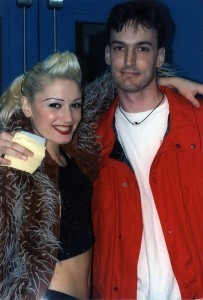
The fluctuation of the two people inside me often caused a mass of confusion, which sometimes led to rage. On occasion the anger and arrogance would spawn an external explosion that needlessly affected others. Not physically, but emotionally. Someone once compared it to a black cloud that overshadowed everyone around me.
Looking back now, I regret all the people that I hurt along the way, from my family and childhood friends, to my new ‘friends’ in the entertainment industry. Most of these individuals were innocent and didn’t deserve the treatment I served on them.
Photographing Rock Stars
Photographing rock stars was certainly not all I hoped it would be. Due to my naiveté, I failed to see the real reason many of these celebrities allowed me into their inner circle. It wasn’t my magnetic personality; it was my ability with a camera.
I’ve had my share of nightmares with these stars. I’ve been assaulted, belittled—you can imagine. David Lee Roth once poured Jack Daniels on my camera while I was shooting. Camera ruined—no remorse on his part. Another time, I was assaulted by Rob Zombie while photographing his show in Virginia Beach. After consideration, I’ve decided that both incidents probably owe less to bad character and more to declining popularity.
As for bad character, just as my own arrogance reached its peak, I met someone—someone very special. For the sake of her privacy, I’ll call her Maya.
Maya had no fear of Strider, my evil alter-ego. She met him head-on and never hesitated to put him in his place and bring him back down to Earth. I once said to a friend, “Who the fuck does this girl think she is? Does she know who I am?” She actually did … and she didn’t care. But more than that, she was asking herself the very same questions about me.
Maya believed in me, and my desire to live life to the fullest potential. She taught me that I didn’t need to be another person in order to give and receive real happiness. For the first time in a very long time, I felt like I didn’t have to be that guy who had to prove himself. It wasn’t easy, and it took some time, but Maya helped me work my way back to the person I had hoped to be.
Perhaps the author Iyanla Vanzant describes my journey best: “Your willingness to look at your darkness is what empowers you to change.” Indeed, really seeing what I had become was the only way I was able to change.
Maya and I have since gone our separate paths—however, she changed my life in countless ways. She encouraged me to remain positive in each and every situation that comes my way. She also taught me how to put kindness and sincerity above ego and arrogance. Through her, I learned I could achieve anything with a confident outlook and hard work towards my desired outcome.
Her resistance to Strider was the catalyst that led me to discover and accept that I never really needed to be anyone but myself. All the fear and insecurities that kept me from seeing my own potential was something that I had simply created in my own mind to hide behind. From what, I’m still not 100 percent sure, and I’m not sure I ever really want to find out.
Losing Matthew
In recent years I have found that helping others is the key to helping oneself. To that end, I’ve channeled my energy and strength into helping others in need. I don’t need to personally know those I’m trying to aid, and I don’t expect any recognition for my efforts.
My decision about where to focus my continuing growth is based on a very personal and very deep pain. On September 09, 2006, while having dinner with friends, I received a call from my mom telling that one of my best friends from childhood had attempted to take his own life. It was Matthew.
When I heard the news, my own troubles suddenly seemed very insignificant.
I first met Matthew while riding the school bus home in the 7th grade. At first I didn’t like him very much. He irritated the hell out of me. I am sure I did the same to him. During that long ride home he would always tell me about his favorite Bluegrass bands. At that age I was not interested in hearing about Bill Monroe and the Bluegrass Boys. Matthew and his family were also Bluegrass musicians. Damn good ones.
We both knew how to push each other’s buttons. As much as we argued, we were always like brothers. I had his best interest at heart and I know he felt the same about me.
Since first meeting him I knew something was wrong with Matthew. However, I dismissed it. In later years, he was diagnosed as having bipolar disorder. As with anyone who has this terrible disorder, controlling the symptoms is often very difficult. Finding the proper dosage of medication is key to treatment, and that search can sometimes be overwhelming.
Matthew tired of the imbalance. Like so many others, when he reached a high, he felt he no longer needed the medication, and very quickly he would crash. After this happened, he completely shut out everyone in his life. He closed himself up both physically and mentally. Finally, after being alone inside his house for days, he turned a gun on himself.
He used a small caliber gun and therefore, did not die immediately. While in a hospital intensive care unit, Matthew was not able to move or open his eyes, but he could still hear.
Fortunately, I was able to visit him one last time. All I could think to say was, “I love you, Matthew. Everything is going to be OK.” A tear rolled down his cheek in response. Sadly, just 12 hours later, he was taken off life support. His life was over.
I felt as if I had let Matthew down because I did not see this coming. I couldn’t help, but in some way feel partly responsible. With all of my madness, I had drifted away from him. I often wonder if I could have said or done something to change his outcome. The reality is…I couldn’t. Matthew is gone.
Creating Awareness: The LifeAfterProject
From that moment on, I felt very passionate about creating awareness of the problem of suicide and I became an advocate for suicide prevention.
I began working on a project called LifeAfter—Visions of Hope. It will be a coffee table book featuring celebrities, (and a few ‘normal’ people, as well), who are advocates of suicide prevention. The term LifeAfter means there is life after any problem that someone may have that makes them feel as if they should end their life.
While doing research for my project I discovered that more deaths are caused from suicide than war, murder and natural disasters in this country each year. I contacted the Didi Hirsch Mental Health Services in Los Angeles to talk to someone about donating proceeds to their charity. They suggested I donate on a national level since many of the celebrities will be from various parts of the country. Through their guidance I contacted the National Suicide Prevention Lifeline (http://www.suicidepreventionlifeline.org), located in New York City.
I arranged a conference call with Dr. Draper, the director of the Lifeline and we had an hour-long conversation about how the National Suicide Prevention Lifeline is able to help people in need. We discussed in detail how my contribution would help the organization. After my conversation with Dr. Draper I felt elated because I knew this was the organization I wanted to support.
The National Suicide Prevention Lifeline provides free and confidential emotional support to people in suicidal crisis or emotional stress 24 hours a day, 7 days a week. Since its inception in 2005, the Lifeline has engaged in a variety of initiatives to improve crisis services and advance suicide prevention.
Since 2007, the Lifeline has been providing special suicide prevention service for U.S. military veterans through an agreement with the Department of Veteran’ Affairs (VA) and U.S. Substance Abuse and Mental Health Services and Administration (SAMHSA).
If you or anyone you know is in need of help, please contact the Lifeline at 1-800-273-TALK (8255).
Edgy, sexy, uplifting and provocative, LifeAfter – Visions of Hope is ultimately a Celebration of LIFE! I am donating 100% of the profits from the project to the organization.
Please join in this undertaking by visiting the links below, and finding out how you can also become involved in your own way to help others. I believe in the Butterfly Effect. Sometimes, without even knowing it, an act as simple as a phone call to say “Hi,” to an old friend, or holding a door for a stranger, can be the one thing that puts positivity back into their life, and may have helped to turn their focus away from the darkness inside to the wonder and brightness of the world around them.
Thank you for your time reading my story, and thanks for not laughing at me, and my many fumbles along my journey to Finding Michael.
Lifeafterproject.com (Subscribe to the blog)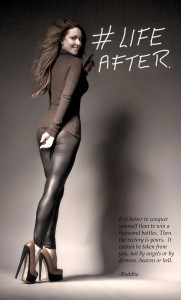
Instagram.com/lifeafterproject
Purchase Broken Pieces and Broken Places on Amazon now! Learn more about all of Rachel’s books here.
Connect with Rachel for social media services on BadRedheadMedia.com
All photos courtesy of Strider Image
The post This is the Reason Gene Simmons Told Me To Check My Ego appeared first on Rachel Thompson.
January 30, 2016
This is The Reason Trolls Scream Their Obscenities
(Guest post by Will Van Stone, Jr.)
I got trolled. And it was just fantastic.
Now, I’ve had some incredibly stupid comments thrown my way for years; part of the whole writing and releasing it into the cyber world thing I do. But those were nothing to get all yippie about. The trolls of yesterday were one or two diss peeps that were easy to ignore. But recently, I met one of those Master TrollsTM and had something a non-atheist might compare to a religious experience.
Y’know, freaky and shit.
INNOCENT BEGINNINGS
It all started when I reshared Sex & Sexuality: A Boy’s Primer. The post is about how it’s okay to not be straight and cis and all that (as well as it’s also okay to be straight and cis and blah, blah, blah). I also stressed the point that if you do knock boots, you make sure to pull that sock on. Seems like some good, solid advice, right?
Um.
It seems, according to one rather vocal ex-follower, the only acceptable sex ed-type advice is to demand no teens do the deed. Cause that works, except when it doesn’t, which is a lot Also, always. According to the not-worthy-to-be-named Master TrollTM,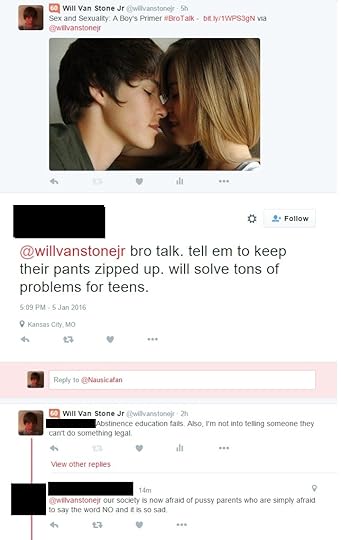
“bro talk. tell em to keep their pants zipped up. will solve tons of problems for teens.”
(I believe he’s averse to proper grammar.)
To which I, unknowing of where this simple tweet would lead, responded,
“Abstinence education fails. Also, I’m not into telling someone they can’t do something legal.”
Oh, hot damn, did he totes hate me and all my words from that point on. What followed was politically charged (cause somehow left wingers have created all the bad things and I’m still wondering how that happened cause I mentioned zero things related to liberals and conservatives but whatevs) and filled with enough vulgarity to make a sailor blush and one weird tweet comparing teen sex to heroin abuse. That one really confused me, even more than the blame gaming he had going on. Like, how is something legal (I know, there are some age of consent laws that make it technically illegal for two minors to have sex with each other but not everywhere so, yeah) with a not even once kind of drugs?
TROLLS: CONFUSED BY LOGIC
Wait. I think I’m searching for logic where none can survive. And that’s the preferred (really, only) weapon of The Troll. They use yelling and cuss words and personal insults to fight you once your calm rational thought train proves too difficult to derail. They can’t come up with decent arguments so they try (hopefully in vain) to drag you down under their bridge and get super pissed when they fail.
There is no way to win when you’re going head to head with a troll. You might be able to confuse them into shutting up, but there’s a good chance your brain will implode first. I didn’t respond to most of what Master TrollTM spewed; what he said was pretty much useless and I, honestly, have better things to do than deal with the stupid shit parade. Of course, I was content to leave him to his nonsensical ramblings until the vulgarities got to be too much. I even asked if the language was necessary. He thought it was. So I opted out.
NOT ALL RESPONSES NEED BE VULGAR
Saying fin wasn’t easy; I wanted to use all the foul words but I didn’t have it in me – tough start to the year – and wasn’t about to expend the energy on uselessness. Also, I have under-eighteen followers and chose to watch what I tweet; I don’t want someone not old enough to drive see a profane-filled tirade splashed across their screen.
Also, I don’t want someone else’s mom yelling at me. I have one who can yell all on her own. Too bad they didn’t notice his f-bomb explosions. But, y’know, whatevs.
For Master TrollsTM, the idea of civil discourse is a foreign concept. The only way they can express themselves is by calling you all sorts of mean, nasty names. And they’re free to – they can even delete the evidence that you (I, duh) have already screen-shot – just as you’re free to ignore them. Please, ignore them ‘cause if they don’t get attention, maybe they’ll get the point and crawl back under the bridge.
But, they won’t. Do you really want an endless war against one of these monosyllabic e-bullies? I mean, if you’re bored or maybe have some pent up frustrations, you might think it’s a good idea to go on a full on, multilingual profane-filled rant, but what good will that get you? You’ll look the fool and the Master TrollTM will count it as a win. You don’t want that. You’ll feel dirty and used and need to scrub your skin off in the shower.
Also, think of the children (he hopes aren’t “running around fucking each other”). Starve the trolls.
Purchase Broken Pieces and Broken Places on Amazon now! Learn more about all of Rachel’s books here.
Connect with Rachel for social media services on BadRedheadMedia.com and if you haven’t yet signed up for her FREE BadRedhead Media 30-day Book Marketing Challenge, it’s not too late! Starts Monday, February 1 and runs for the entire month, only by newsletter! Click here to learn more.

The post This is The Reason Trolls Scream Their Obscenities appeared first on Rachel Thompson.
January 17, 2016
What It’s Like To Be A Mother with Anxiety by @lauriehollmanph
By Laurie Hollman, Ph.D.
They all finally flew out the door on time. When I could hear the bus roll up the street, I felt some relief. They would be gone soon. I proceeded cautiously with some hesitation, so I wouldn’t forget anything they needed before they left. But I didn’t know how long I could mask my strain as I steeled myself impatiently waiting for the house to empty.
Cole had been trailing at my heels always in reach. I was desperate to escape the scrutiny of sensitive Lara. I didn’t think I could elude her close examination. I know she detects something. Oh, not to be there for her when I can hardly be here for myself. But, okay now; they’re gone. My jaws ache terribly on both sides, pressing inward. The prickling heat of my face keeps me ablaze, a heat that betrays that I’m all right. I try to relieve the pressure in my chest by holding my hand over my heart as if to slow it. I’ve felt this wretched pain for too many days. On and off. My upper body is under siege. I’m surprised I am able to walk, even run up the stairs.
How can I be both weary and tense?
I can’t stop the feeling of threat. I glance in the mirror in the front hall. Delicate lines mark my cheeks and forehead. I’m strangely removed from the reflection, astonished to see a youthful face with clear, deep set, dark brown eyes. I recognize those eyes staring back at me recording my fears in a way that makes me turn away.
There’s a knock at the door. Startled, I don’t move so I’m not seen through the window. Only for my children can I hold up the charade today. Who’s ever at the door can just go away. There. It’s quiet again. The knocking rocked me though. I need many minutes to recover.
Oh, tell me, dear me, how to gather myself. Sitting very still, letting my shoulders rest—that helps.
There’s no harm in taking advantage of this time alone. I can’t always be productive. Thank goodness for the quiet. There’s no shame in taking time to care for myself. No, no shame.
Laurie Hollman, Ph.D. is a psychoanalyst working with many anxious mothers that led to her writing this column. She has a new book, Unlocking Parental Intelligence: Finding Meaning in Your Child’s Behavior , on amazon and barnes & noble. Learn more about Dr. Hollman at http://lauriehollmanphd.com; https://twitter.com/lauriehollmanph
Enter to win a free Kindle Paperwhite, 14 free eBooks, or a $50 Amazon gift card from the
Gravity Imprint of Booktrope Publishing!
Royalty-free photo courtesy of Unsplash
The post What It’s Like To Be A Mother with Anxiety by @lauriehollmanph appeared first on Rachel Thompson.
January 10, 2016
Grooming: The Destructive Abuse That Never Ends via @BobbiLParish
*Trigger Warning*
Day after day I sit with survivors of childhood sexual abuse who feel worthless, powerless and to blame for the horror they endured. Making it worse, they receive repeated pressure from people in their lives to “put it behind you,” “get over it,” and “just let it go.” I’ve received the same demands and judgment from people in my own life. What those people fail to realize is the power of grooming – the brain washing most child victims of sexual abuse go through at the hands of their abuser.
Grooming
Grooming is the process that predators use to gain control over a child for the purpose of sexually abusing them. They use a series of manipulative behaviors, involving tangible and intangible means, to exploit the child while maintaining control over them so that they do not resist or report the abuse. There are generally considered to be six stages to the grooming process:
Targeting the Victim: The predator selects a child that he or she perceives as being needy, easily isolated and responsive to manipulation. This can be their own child – if they have several children, they will choose the one they feel is most susceptible to manipulation.
Building Trust: The predator actively engages with the child, showing them special attention and favor.
Filling a Need: In this stage, the predator begins to provide the child with something he or she perceives the child is missing and craving: attention, affection, approval or even protection against bullies.
Isolating the Child: Now that the predator has built trust and filled a need, they leverage that to isolate the child. They tell the child that their relationship is a secret, or that others wouldn’t approve of their friendship and would try to break up their friendship. When the secret is built upon shame and fear, the child begins to isolate himself or herself and the predator doesn’t even need to do it.
Sexualizing the Relationship: The predator now has all components of the grooming process in place in order to begin sexually abusing the child. The abuse will typically escalate over time.
Maintaining Control: At this point the predator actively abuses the child, while continuing to fill their needs and keep them isolated. Oftentimes, the abuser will now actively shame the child for “agreeing” to be an active participant in the sexual relationship. The shame is a very powerful silencing and isolating tool. The abuser has now become a significant source of meeting the child’s needs, so much so that the child fears losing the relationship and will acquiesce to the abuser’s requests. The child is now doubting his or her capacity to perceive reality, and relies upon the abuser’s statements about reality.
After the Abuse
Eventually, through reporting or circumstance, the abuse ends and sometimes the relationship with the abuser does as well, but the damage persists. The child grows into an adult riddled with shame, unable to trust their own perceptions of reality, and with contorted perceptions of what a loving relationship looks like. They feel unworthy, guilty and powerless. Long after the physical wounds of the abuse end, the emotional abuse lives on. Getting it out of our head is not as simple as declaring it gone. Not easily evicted from where it’s resided for years, it has powerful squatter’s rights. It is ingrained, by years of grooming, into the fabric of our thoughts and beliefs.
Picking out the threads of lies woven into our mind by our abuser takes time and care. We have to figure out what is the truth and what is the lie that our abuser taught us. It’s hard to tell the difference, because they have both existed in our minds for so long. They all look the same. We have to test one thread at a time, with judgment that is often skewed by the grooming we receive. It’s a flawed system trying to detect flawed thoughts. Grooming sets us up by creating a distorted thinking system. Even when someone tries to tell us the truth we question it.
Long-Term Effects of Grooming
I’ve sat with hundreds of survivors as they sort through their thoughts and beliefs, picking out and throwing away the lies. It’s not easy, and it’s not swift. Judgment from society and our loved ones that we should “leave the past behind us” doesn’t help. That’s exactly what we’re trying to do, but it isn’t simple. We can’t just rip the memories out of our head and throw them away. Even if we could, the memories aren’t the worst part of the abuse. The grooming, the feelings of worthlessness and blame, are the part that lingers on and undermines the good things that come into our life. Years after the physical abuse ends, the grooming continues to wreak havoc.
If you love a survivor, please educate yourself about grooming and its aftereffects. It will be very helpful as you support your loved one through the recovery process. If you’re a survivor be assured that you can eradicate the feelings of worthlessness, powerlessness and self-blame from your life, in time and with support from people who know and understand childhood trauma.
Get connected with the survivor community, where there is hope and help from people who have walked the same journey you are on. We will never tell you to “just get over it.” We will help you sort through the fibers, cull out the lies and fill in the spaces left behind with the truth of how incredible, strong, and powerful that you really are.
Join Rachel and me any Tuesday for #SexAbuseChat — 6pm pst/9pm est on Twitter. Just use the hashtag or log into Tweetchat.com and type in the hashtag once. It’s easy!
Interested in learning more about Rachel’s services or books? Click here. Purchase Broken Pieces or Broken Places on Amazon.
Royalty-free pictures courtesy of Pixabay
The post Grooming: The Destructive Abuse That Never Ends via @BobbiLParish appeared first on Rachel Thompson.
January 2, 2016
I Want To Share Your Top Successes and Failures of 2015
It’s (obviously) a new year, and many folks have done wrap-up posts for 2015: their favorite this, their most-hated that. I’ve decided to do something a little different: I’d like to know what YOU feel is your biggest successes and your biggest failures this past year, and what you learned from both.
I truly feel we learn from each other’s successes and failures — none of us is perfect and besides, perfection is boring anyway! I’ll start.
My Successes
Professionally, my books have never done better, achieving consistent #1 rankings on Women’s Poetry, Women Authors, Memoir, and garnering an official Author Ranking (only given to authors under 100) on Amazon. I give details how I think(?) I’ve gotten to this point in my latest BadRedhead Media post, if you’d like to take a look.
As the director of the Gravity Imprint of Booktrope Publishing, I helped publish twelve amazing books of trauma and recovery by twelve amazing authors — fiction and nonfiction. I can’t ever tell you how honored I am to be part of this process, and I hope you learn more about them. Read these books! Each of their stories brings tears to my eyes, and their bravery stuns me.
What I learned: every story matters. It’s that simple and that profound.
Personally, I got divorced. I initiated it, it took fourteen L O N G months, a crapton of time, resources, paperwork, and emotional and mental stress, but I did it. Divorce is a huge undertaking, almost like a business deal. A lot like a business deal, except people (and children) are involved, and the details are critically important. We’re still not done with the details (will we ever be?), but the big part is over, and for that I’m grateful.
What I learned: that I’m stronger, and more vulnerable, that I ever thought; and that divorce isn’t a failure, simply another change.
My Failures
Professionally, like most people, I spend too much time on social media and not enough writing my books. It doesn’t help that my business involves doing social media for clients (though I adore what I do), so I have to be on all the time. I do write every day, mostly blog posts and articles (I write for Huffington Post, Good Men Project, Feminine Collective, IndieReader, and Book Promotion.com regularly, plus my own two weekly blogs) which I love, and I’m looking at writing for more paid sites as well.
While I don’t regret any of this (regrets are stupid), and I’m proud of the writing and the visibility it brings, I need to knuckle down and write two books this year: Broken People, the third and final book in the Broken series (already started and about one-fourth of the way through), and my first BadRedhead Media book: The FREE 30-Day Book Marketing Challenge (and I’m well on my way — join my free newsletter here. The project starts in February!). I started cutting back on Facebook already, taking #FFF (Facebook Free Fridays) this year, but it’s not enough. 
What I learned: I don’t need to be on social media as often, so I’m cutting back even further. I’ve established my presence all these many years. A few less tweets or Facebook posts won’t mean less sales. Er, I hope. 
Personally, I’m always on this damn computer (sorry, MacBook Pro, you’re really awesome and I love you, shhhhh, it’s okay), and don’t spend enough time on self-care. I need more me-time: more yoga, meditation, even walking — to free my mind and release the creative bugs that are pinging around my brain. This also means more time with my own most precious bugs — my children. While they’re used to seeing me at my computer, and I make time for them daily, I want more ‘eye-contact’ time with them, and they with me.
What I learned: Time is fluid, and while I can’t get back what I’ve lost, I can make the most of what I have. Sounds trite, but I don’t mean for it to. My watchword for this year is courage, and I’ve started a Pinterest board to remind myself to face my demons, write what scares me, and do whatever it takes to be my best self, including taking care of me.
Your Turn!
What are your greatest successes and failures this year, and what have you learned? Please leave in the comments below. Share a link to your work (it’s okay to be self-promotional — I’m not usually a big fan, but I want to celebrate YOU today), be brutally honest about what you didn’t achieve or could have done better, and tell us lessons learned.
We all need to cheer each other on, and I can’t think of a better way than to be honest in examining our gains and losses. Let’s do this thingy. Go!
Interested in learning more about Rachel’s services or books? Click here. Purchase Broken Pieces or Broken Places on Amazon.
The post I Want To Share Your Top Successes and Failures of 2015 appeared first on Rachel Thompson.






